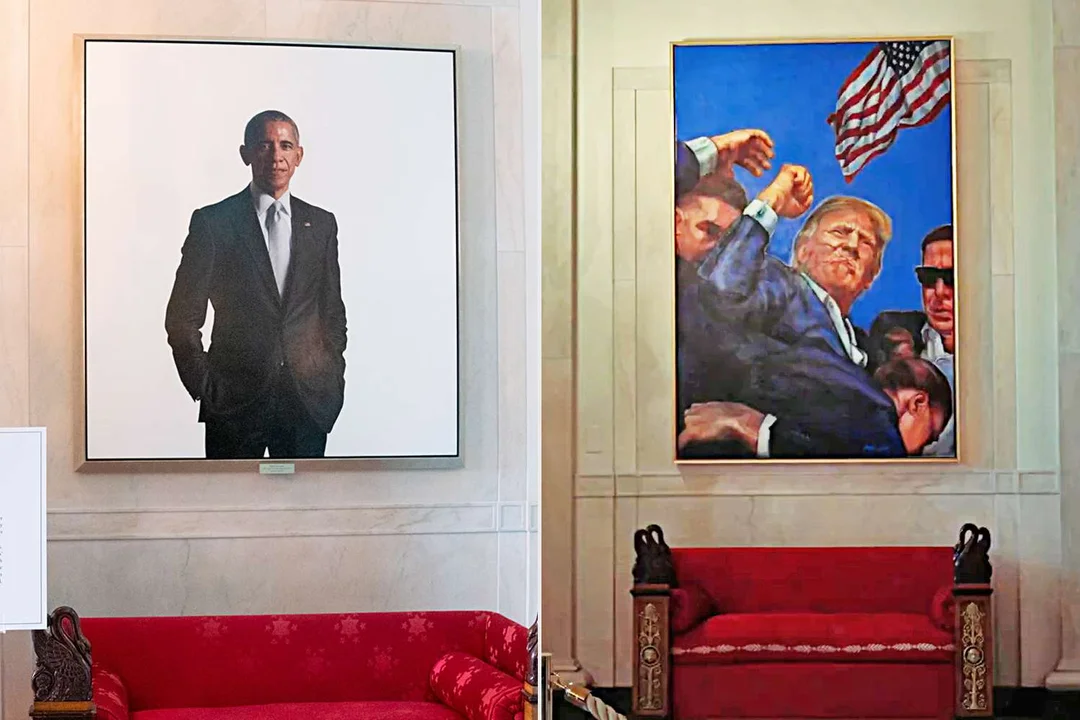
White House Stirs Debate by Replacing Obama’s Portrait With Dramatic Trump Painting
The White House is drawing national attention and sparking debate after moving former President Barack Obama’s portrait to make way for a new, striking painting of President Donald Trump in the Grand Foyer. The bold shift is notable not only for its symbolism but also for its break from long-standing presidential traditions.

The move, confirmed by White House officials, replaces the official Obama portrait—which shows the 44th president in a dark suit and silver tie, painted by Robert McCurdy—with a pop-art rendering of Trump. The new image is based on powerful photographs from the July 2024 Butler, Pennsylvania rally, moments after an assassination attempt, capturing Trump raising his fist amid a backdrop of American flag, blue sky, and dramatic streaks of red across his face.
While it’s common for White House artwork to rotate with new administrations, presidential historians note that hanging a painting of a sitting president is unprecedented. “Typically, paintings of presidents and first ladies are hung in the White House after they have left office,” explained a historian in response to the change.
Tradition calls for the Grand Foyer to prominently display the two most recent former presidents. With President Joe Biden’s portrait yet to be completed, Obama’s and George W. Bush’s images had occupied the space since 2022. Now, Obama’s portrait is relocated across the Foyer, while Bush’s is moved near his father's, in a gesture reminiscent of Trump’s earlier term, when he repositioned portraits of Bill Clinton and George W. Bush in favor of those of William McKinley and Theodore Roosevelt.
The new Trump painting’s installation was conducted early on a Friday, described as a "significant yet understated" event. The White House announced the swap via its official social media, further amplifying the moment’s impact. The image itself has swiftly become an emblem of resilience for the Trump campaign.
Questions remain about the portrait’s artist and funding. It’s believed to be inspired by photos from Associated Press photographer Evan Vucci and the New York Times' Doug Mills. The official tradition of presidential portraiture, privately funded by the White House Historical Association, dates back to the efforts of First Lady Jacqueline Kennedy in the early 1960s.
Public and scholarly reactions are mixed. While some see the move as an assertion of strength and presence by Trump, others regard it as a break from the spirit of bipartisan respect that has historically underpinned the White House’s collection. A spokesperson for former President Obama declined to comment, and the Historical Association deferred questions back to the White House.
This moment captures more than an interior design decision—it highlights the push and pull of tradition versus symbolism, raising questions about how presidents use the trappings of office to shape their legacies.
What do you think: Is this a meaningful symbol of political resilience, or does it upend valuable tradition? Share your thoughts in the comments, and join the conversation.